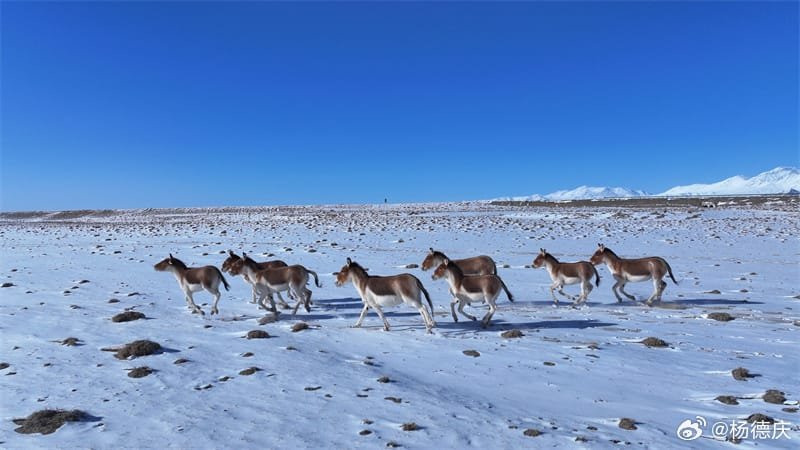The Tibetan Plateau, often referred to as the “Roof of the World,” is one of the most unique and ecologically diverse regions on Earth. Its vast expanse, which spans across the Tibetan Autonomous Region (TAR), parts of Qinghai, Sichuan, and other neighboring provinces of China, encompasses a broad range of habitats and climates, from alpine meadows to high-altitude deserts and grasslands. Despite the harsh climatic conditions, which include freezing temperatures, low oxygen levels, and high ultraviolet radiation, the plateau hosts a remarkable diversity of species that have adapted to the extreme environment. This article offers a comprehensive exploration of the wildlife on the Tibetan Plateau, examining the various species that inhabit the region, their ecological roles, and the conservation efforts in place to protect these remarkable animals.
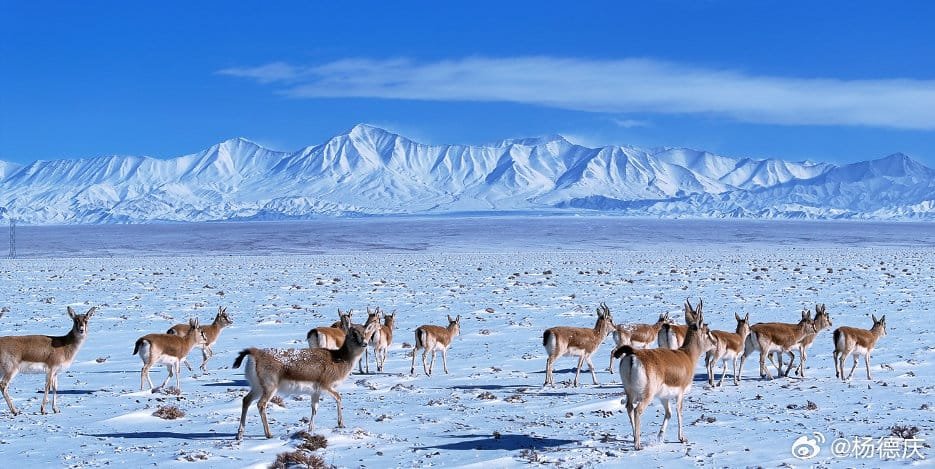
Ecological Significance of the Tibetan Plateau
The Tibetan Plateau is one of the most ecologically significant regions in the world due to its vast size, unique geography, and variety of habitats. It serves as a critical habitat for many endemic species, some of which are found nowhere else on Earth. The plateau plays a vital role in maintaining global climate stability, regulating atmospheric circulation, and influencing the hydrological cycles in Asia. It is the source of several major rivers, including the Yangtze, the Yellow River, and the Mekong, which are crucial to the survival of millions of people and wildlife across Asia.
In addition to its ecological importance, the Tibetan Plateau is home to a range of distinct species that are specially adapted to life in such a challenging environment. These animals have evolved over millions of years to survive in the high-altitude ecosystem, where the air is thin, food is scarce, and temperatures can drop to extreme lows.
Popular Mammals of the Tibetan Plateau
The mammalian fauna of the Tibetan Plateau is diverse, encompassing both large herbivores and carnivores, as well as smaller rodents and insectivores. These species play crucial roles in the ecosystems of the plateau, from regulating vegetation to serving as prey for top predators.
Large Herbivores on Qinghai Tibetan Plateau
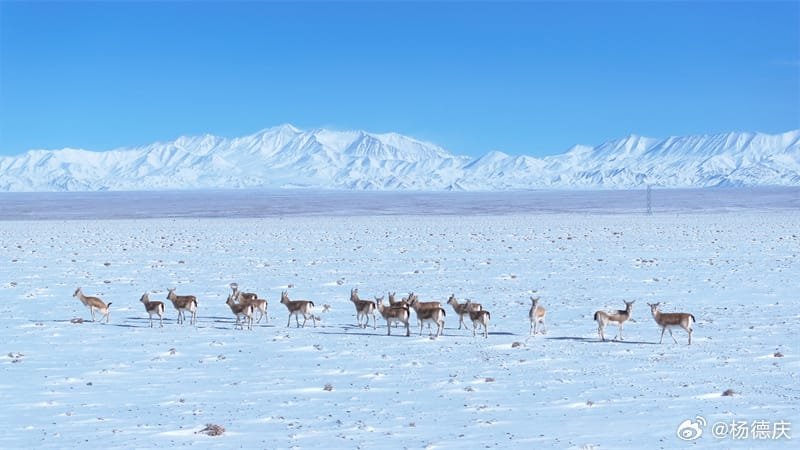
Tibetan Antelope (Pantholops hodgsonii)
The Tibetan antelope, also known as the chiru, is one of the most iconic species of the Tibetan Plateau. It is a highly specialized herbivore that is adapted to the extreme conditions of the plateau’s steppe and grassland ecosystems. Tibetan antelopes have a light, wiry frame and long legs, enabling them to move quickly across the vast, open plains. They primarily feed on grasses and shrubs, and their primary predators are snow leopards and wolves. Historically, the Tibetan antelope was heavily hunted for its wool, known as shahtoosh, which is considered to be one of the finest and most expensive fibers in the world. Due to over-hunting and habitat loss, the species was classified as endangered by the IUCN. However, with the establishment of protected areas and stricter anti-poaching laws, the population of Tibetan antelopes has seen a recovery, and they are now considered “Near Threatened.”
Blue Sheep (Pseudois nayaur)
The blue sheep, or bharal, is another significant herbivore of the Tibetan Plateau. Known for its blue-gray coat and robust build, the blue sheep is found in rocky, rugged areas at high altitudes. It feeds on grasses, shrubs, and mosses, and is an important prey species for carnivores such as snow leopards and Tibetan wolves. The blue sheep’s ability to navigate steep, rocky terrain makes it well-adapted to life in the mountainous regions of the plateau. Blue sheep are highly social animals, living in large herds that help protect them from predators. Despite being less threatened than other species, habitat fragmentation and hunting for sport pose ongoing challenges to their populations.
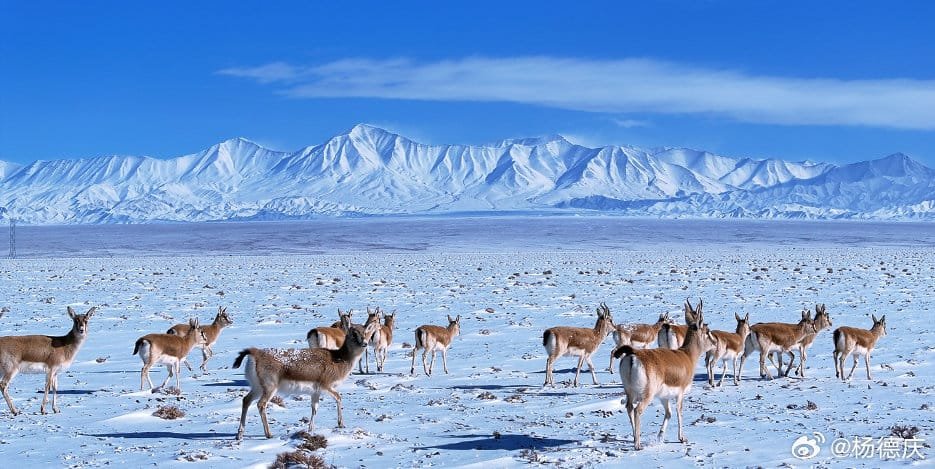
Tibetan Gazelle (Procapra picticaudata)
The Tibetan gazelle is a small, graceful herbivore found across the high-altitude grasslands of the Tibetan Plateau. With its slender build and long legs, it is well-suited to life in the open, wind-swept plains. The gazelle feeds on a variety of grasses and herbs and is an important prey species for carnivores. Its primary predators include wolves and snow leopards. Although the gazelle is not currently classified as endangered, it faces significant pressure from habitat loss and poaching. Conservation efforts are essential to ensuring that populations remain stable.
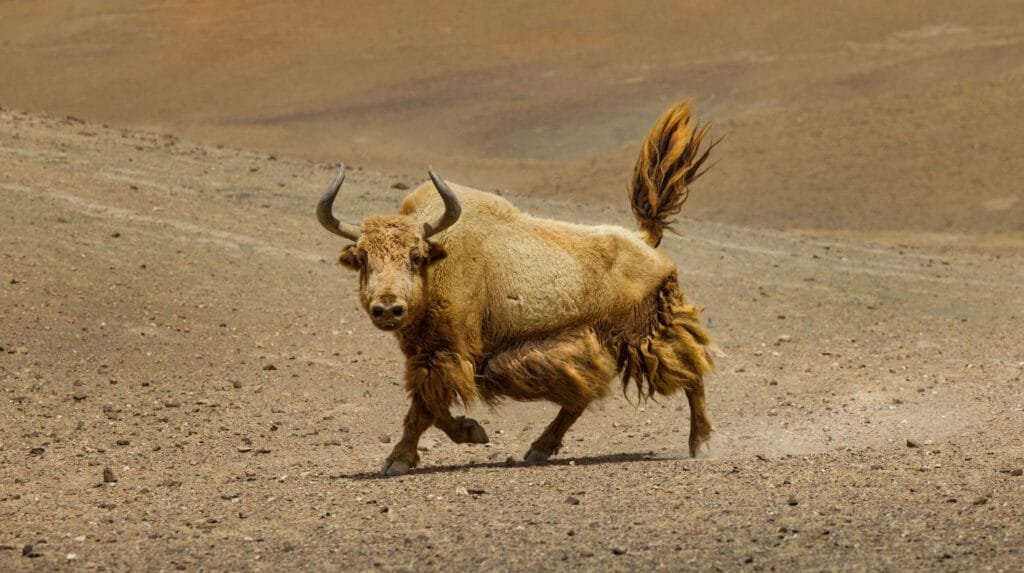
Wild Yak (Bos grunniens)
The wild yak, a close relative of the domesticated yak, is a hardy species that thrives in the cold, alpine regions of the Tibetan Plateau. Wild yaks are large, powerful animals that are able to withstand extreme cold temperatures, high altitudes, and scarce food supplies. They are primarily herbivores, grazing on grasses and alpine vegetation. Wild yaks are also culturally significant to the Tibetan people, who rely on domesticated yaks for transportation, milk, and meat. However, wild yak populations have declined significantly due to habitat loss, interbreeding with domesticated yaks, and hunting for their meat and hides.
Popular Carnivores on Tibetan Plateau
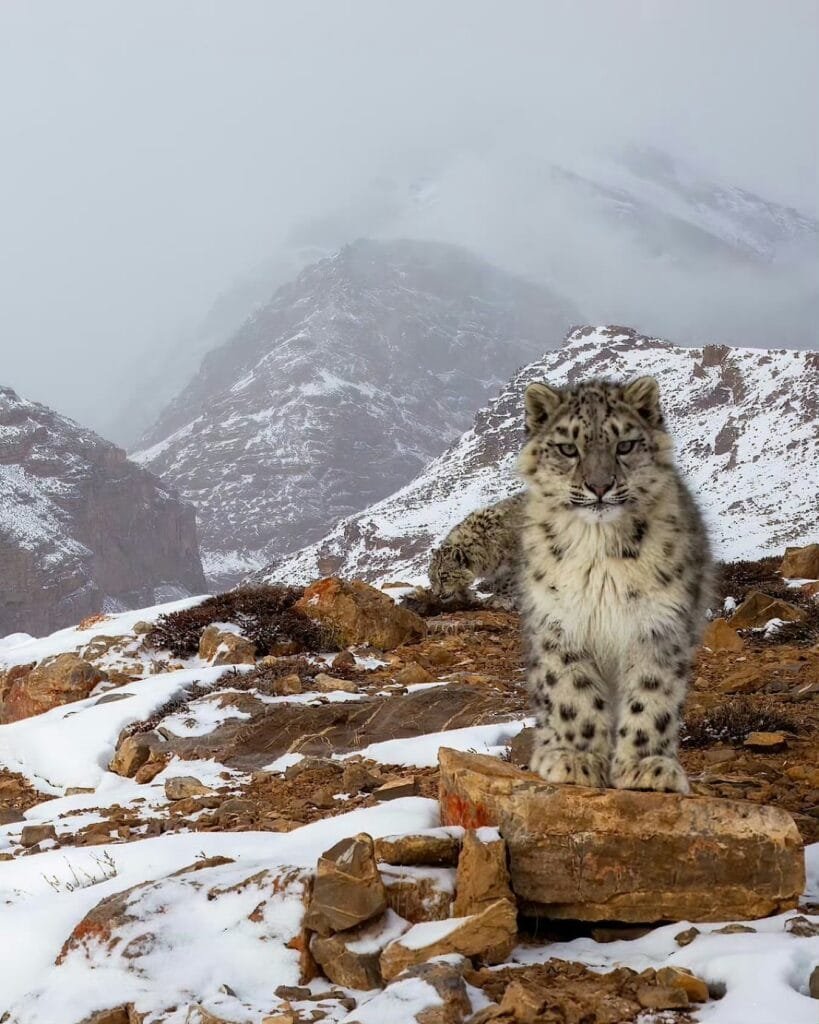
Snow Leopard (Panthera uncia)
The snow leopard is perhaps the most iconic predator of the Tibetan Plateau. Known for its elusive nature and beautiful spotted coat, the snow leopard is a top predator in the high-altitude ecosystems of the plateau. It preys primarily on large herbivores, such as blue sheep, Tibetan antelopes, and domestic livestock. The snow leopard is a solitary animal, typically living in remote, mountainous regions. The species is listed as vulnerable on the IUCN Red List due to habitat loss, poaching for its fur, and retaliatory killings by herders. Ongoing conservation efforts, including the creation of protected areas and anti-poaching initiatives, are crucial for ensuring the survival of this magnificent predator.
Tibetan Wolf (Canis lupus chanco)
The Tibetan wolf is a subspecies of the gray wolf that inhabits the Tibetan Plateau. It is a versatile predator that hunts both large herbivores, such as blue sheep and wild yaks, and smaller prey, including rodents and birds. Tibetan wolves are highly adaptable and are able to survive in a variety of habitats, from alpine meadows to arid deserts. Like many other large predators, Tibetan wolves often come into conflict with humans, particularly when they prey on livestock. As a result, they are often persecuted by local herders. Despite this, the Tibetan wolf is not currently considered endangered.
Pallas’s Cat (Otocolobus manul)
The Pallas’s cat is a small, solitary cat species that inhabits the grasslands and rocky steppes of the Tibetan Plateau. Known for its round face, thick fur, and short tail, the Pallas’s cat is well-adapted to the cold, arid conditions of the plateau. It primarily preys on small mammals, such as rodents, and birds. Although the Pallas’s cat is not currently classified as endangered, its populations are threatened by habitat loss, human-wildlife conflict, and hunting for its fur.
Small Mammals on Tibet:
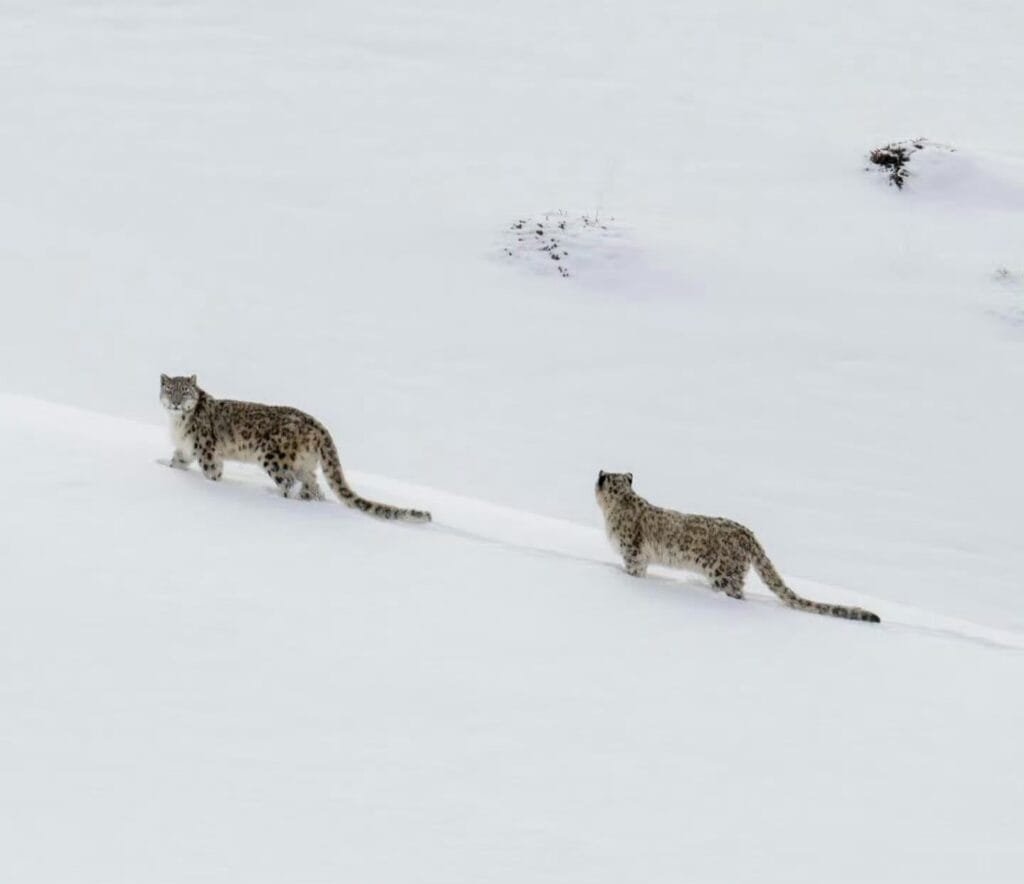
Pika (Ochotona curzoniae)
The pika is a small, herbivorous mammal that is common in the alpine regions of the Tibetan Plateau. Known for its high-pitched call, the pika feeds on grasses, mosses, and alpine plants. Pikas are highly adapted to cold environments, with thick fur and the ability to survive in low-oxygen conditions. They are an important prey species for a variety of carnivores, including red foxes and snow leopards. Pikas are also important for the ecosystem, as they help regulate plant populations by feeding on vegetation. However, they are vulnerable to climate change, as rising temperatures threaten their alpine habitat.
Marmot (Marmota himalayana)
The Himalayan marmot is a large ground squirrel that lives in the alpine meadows of the Tibetan Plateau. Marmots are highly social animals, living in colonies and communicating with each other using a variety of vocalizations. They primarily feed on grasses, herbs, and seeds. Marmots are important prey species for carnivores, including foxes and wolves, and play a key role in maintaining the balance of the plateau’s ecosystems. However, their populations are threatened by habitat destruction, hunting, and the impacts of climate change.
Birds of the Tibetan Plateau
The Tibetan Plateau is home to a diverse array of bird species, many of which are adapted to the harsh environment. These birds play important roles in maintaining the ecological balance of the plateau’s ecosystems, from controlling insect populations to dispersing seeds and pollen.
1. Raptors:
- Lammergeier (Gypaetus barbatus)
The lammergeier, also known as the bearded vulture, is one of the most impressive raptors of the Tibetan Plateau. It has a distinctive appearance, with a large wingspan and a beard-like tuft of feathers around its beak. Lammergeiers are scavengers, primarily feeding on the bones of large mammals such as wild yaks and blue sheep. They are skilled at breaking bones by dropping them from great heights onto rocks below. Lammergeiers are considered vulnerable due to habitat loss, human disturbance, and poisoning from carcasses contaminated by pesticides. - Saker Falcon (Falco cherrug)
The saker falcon is a large bird of prey that is found in the open grasslands and steppes of the Tibetan Plateau. Known for its speed and
agility, the saker falcon preys on a variety of birds and small mammals. It is an important species for traditional falconry, particularly in Central Asia. The saker falcon is considered vulnerable, with populations declining due to habitat loss, hunting, and the illegal pet trade.
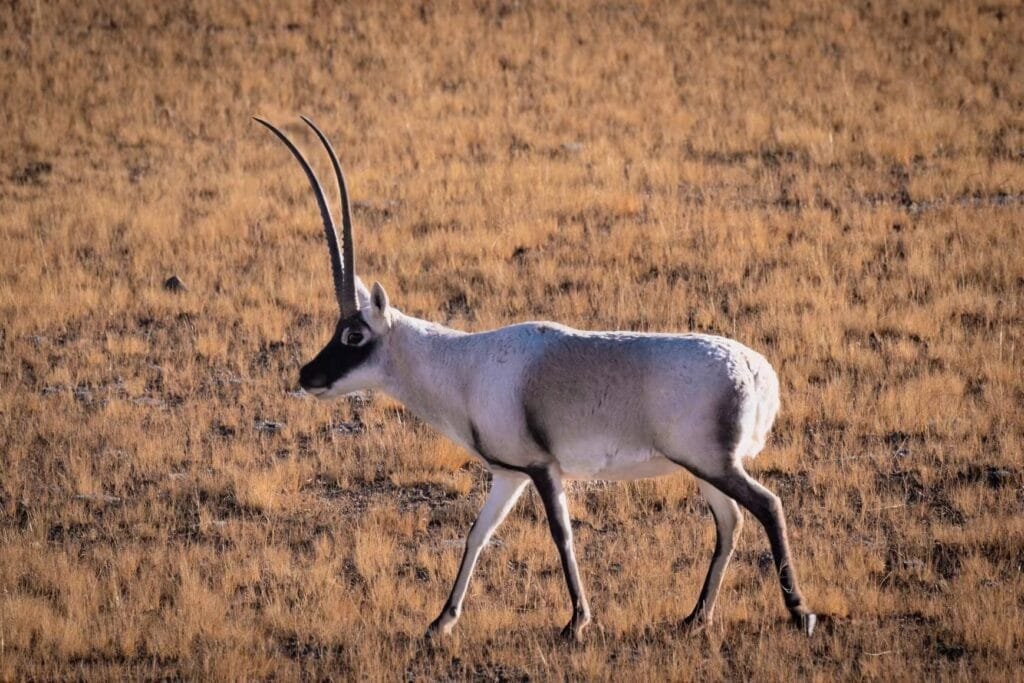
2. Waterbirds:
- Pallas’s Gull (Larus ichthyaetus)
Pallas’s gull is a large waterbird that is found in the wetlands and lakes of the Tibetan Plateau. It primarily feeds on fish, small mammals, and insects. The species is considered near threatened due to habitat loss and disturbance from human activities, particularly in the regions surrounding the large lakes of the plateau. - Great-Crested Grebe (Podiceps cristatus)
The great-crested grebe is a waterbird commonly found in the lakes and wetlands of the Tibetan Plateau. Known for its striking plumage and elaborate courtship display, this species feeds primarily on fish and invertebrates. Although the great-crested grebe is not currently endangered, its populations are threatened by habitat destruction, particularly the draining of wetlands for agriculture and infrastructure development.
Conservation Efforts on the Tibetan Plateau
Given the unique biodiversity of the Tibetan Plateau and its ecological importance, significant conservation efforts have been initiated to protect its wildlife. These efforts are aimed at addressing the primary threats to biodiversity, including habitat loss, poaching, human-wildlife conflict, and climate change.
1. Establishment of Protected Areas:
Large nature reserves, such as the Chang Tang Nature Reserve, have been established to protect key species and their habitats. These protected areas cover vast stretches of the plateau, providing sanctuary for endangered and vulnerable species. The Chang Tang Reserve, for example, is one of the largest nature reserves in China and is home to many iconic species, including the Tibetan antelope and the wild yak. Other protected areas include the Qiangtang Nature Reserve and the Sanjiangyuan Nature Reserve.
2. Anti-Poaching Measures:
Efforts to combat poaching have been a central part of conservation initiatives on the Tibetan Plateau. In particular, anti-poaching patrols have been implemented in key areas to prevent the illegal hunting of species such as the Tibetan antelope, snow leopard, and blue sheep. These patrols are often supported by local communities, who play a crucial role in reporting illegal activities.
3. Climate Change Mitigation:
The impacts of climate change on the Tibetan Plateau are becoming increasingly evident. Rising temperatures and changing precipitation patterns are threatening the region’s fragile ecosystems. Efforts to mitigate the effects of climate change include research into the impacts of temperature fluctuations on species distribution, as well as initiatives to reduce greenhouse gas emissions.
4. Community Involvement:
Local communities, particularly Tibetan herders, are increasingly involved in conservation efforts. These communities have deep knowledge of the land and its wildlife and are essential partners in ensuring the sustainability of conservation programs. By providing economic incentives and promoting sustainable practices, conservation organizations aim to build stronger partnerships with local communities to protect the plateau’s biodiversity.
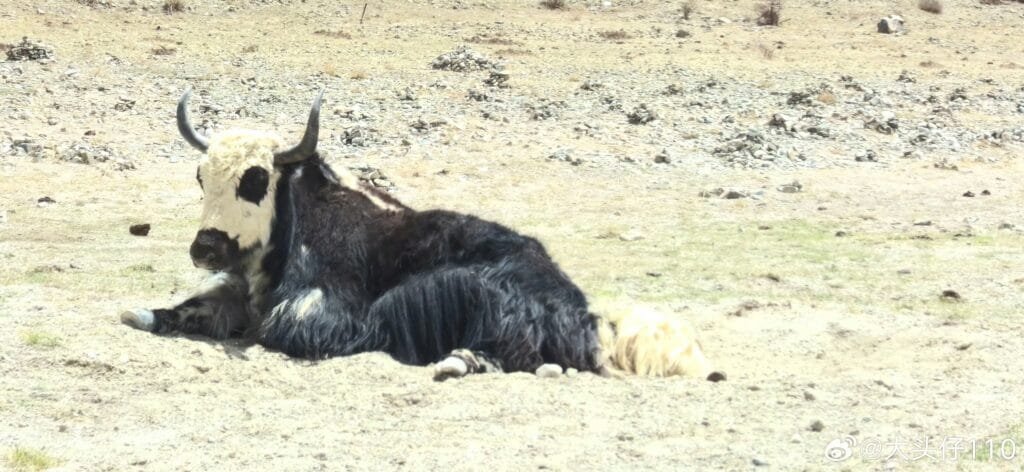
Conclusion
The Tibetan Plateau is home to an extraordinary range of wildlife, many of which are uniquely adapted to life at high altitudes. From the elusive snow leopard to the iconic Tibetan antelope, these species play critical roles in maintaining the ecological balance of the region. However, the wildlife of the Tibetan Plateau faces numerous threats, including habitat destruction, poaching, and the impacts of climate change. Through concerted conservation efforts, including the establishment of protected areas, anti-poaching initiatives, and community involvement, it is hoped that the diverse and irreplaceable species of the Tibetan Plateau can be preserved for future generations.
In the face of these challenges, the future of the Tibetan Plateau’s wildlife depends on continued efforts to safeguard its ecosystems and address the pressing issues of human-wildlife conflict, habitat loss, and climate change. With a combination of scientific research, local engagement, and governmental support, it is possible to ensure that the wildlife of the Tibetan Plateau continues to thrive in this unique and remote part of the world.
